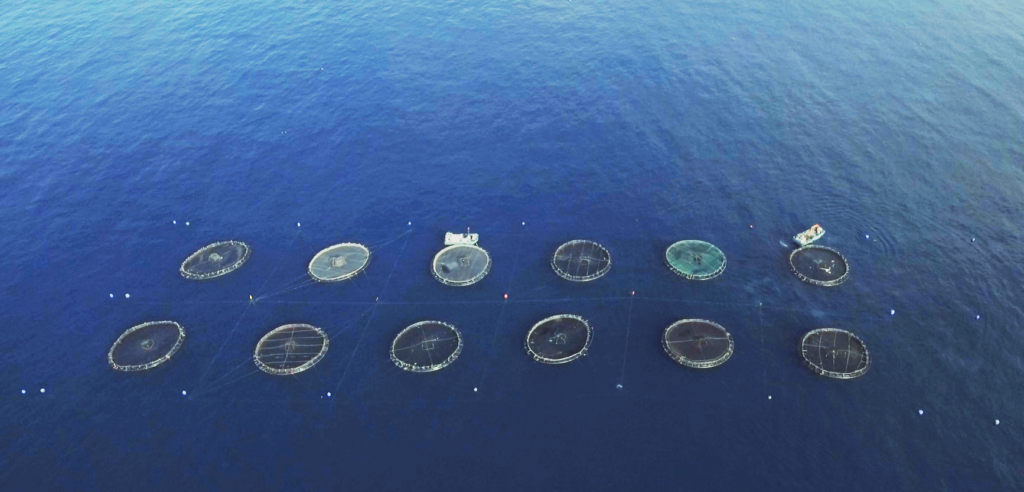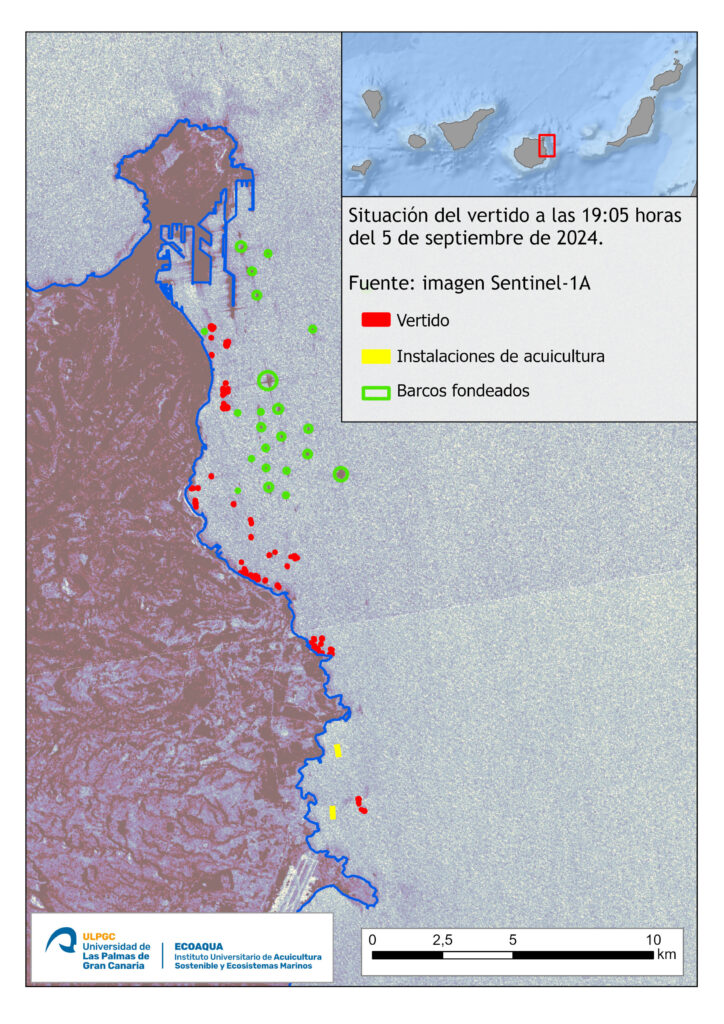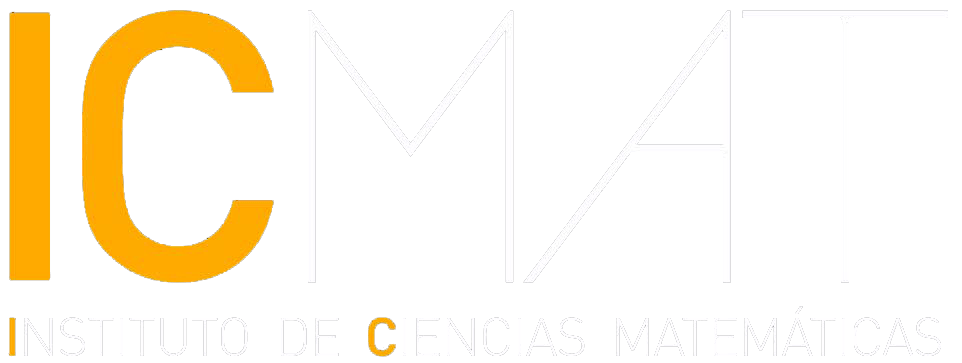The SIRENA project, coordinated by Ana María Mancho, a CSIC scientific researcher at the Institute of Mathematical Sciences, aims to help safeguard aquaculture facilities in the territorial waters of the Canary Islands against spills or massive growth of microorganisms. To do so, it uses mathematical models that predict the evolution of fluids, using satellite observations and oceanographic samples.

Aerial image of an aquaculture farm in Gran Canaria. Image: Asociación Grupo de Acción Costera de Gran Canaria.
In recent years, the Canary archipelago has experienced events of natural origin – such as massive growths of algae and other microorganisms – and human origin – such as the recent fuel spill in the Port of Las Palmas – with serious environmental and economic impacts. The lack of an adequate system to predict the evolution of these events generates economic and environmental losses in the Canary Islands coastal area. In this context, the SIRENA project (Integral Remote System for Monitoring, Detection and Prediction of Risks of Potentially Harmful Marine Events of Natural or Anthropic Origin in Off-Shore Areas Destined for Aquaculture) has the main objective of safeguarding aquaculture areas in the territorial waters of the Canary Islands through the implementation of mathematical models and advanced technologies for monitoring and risk prediction.
SIRENA is an innovative warning programme based on the detection of any harmful event, of natural or anthropogenic origin, by means of satellite images, and the subsequent calculation of its trajectory using mathematical models and methodologies that have already been successfully tested in other contexts. ‘In this way, fish farmers and other public entities will be able to anticipate and mitigate potential risks, reducing economic losses and environmental damage,’ says Ana María Mancho, scientific researcher at the Spanish National Research Council (CSIC) at the Institute of Mathematical Sciences (ICMAT) and coordinator of the project.
The project is currently in the initial implementation phase. The CSIC team at the ICMAT and the University Institute for Research in Sustainable Aquaculture and Marine Ecosystems (ECOAQUA) of the University of Las Palmas de Gran Canaria are planning the oceanographic campaigns to take measurements in situ with the necessary instruments, which will serve as the basis for the generation and validation of the hydrodynamic prediction models.

The container ship Akhisar spilled 1800 litres of fuel oil in the Port of La Luz and Las Palmas on 4 September. The spill affected the coast of Gran Canaria. Image: Alejandro Garcia Mendoza, Antonio G. Ramos (ULPGC).
The spill caused by the vessel Akhisar
On 4 September, the Liberian-flagged container ship Akhisar caused a spill of 1800 litres of fuel oil during a refuelling operation in the Port of La Luz and Las Palmas. The dragging of the spill by the sea currents affected the coast of Gran Canaria, forcing the closure of some beaches.
Thanks to the observation of satellite images carried out by ECOAQUA, together with the collaboration of the company Digital Earth Solutions (DES) and ICMAT, it was possible to predict which specific coastal areas would be affected by the fuel oil slicks, ruling out the Gran Canaria aquaculture farms installed near the east coast of the island.
SIRENA Project
This project is coordinated by Ana María Mancho, a CSIC scientific researcher at the ICMAT, and is being carried out with the collaboration of the Biodiversity Foundation of the Ministry for Ecological Transition and the Demographic Challenge, through the Pleamar Programme co-financed by the European Union’s FEMPA (European Maritime, Fisheries and Aquaculture Fund).
More information on the SIRENA Project.
